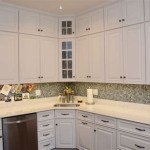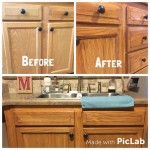Is Danish Oil Good For Kitchen Cabinets?
Danish oil, a blend of drying oils, varnish, and sometimes pigments, has been a popular choice for wood finishing for decades. Its reputation for enhancing the natural beauty of wood and providing a durable protective layer makes it an attractive option for various woodworking projects, including kitchen cabinets. However, while Danish oil offers certain advantages, it is crucial to consider its limitations and suitability for this specific application before making a decision.
Advantages of Danish Oil for Kitchen Cabinets
Danish oil offers several advantages that make it appealing for kitchen cabinets, particularly for those seeking a natural and protective finish:
- Enhanced Natural Beauty: Danish oil's primary function is to penetrate and nourish the wood, bringing out its natural grain and color. This creates a warm and appealing finish that complements the kitchen's overall aesthetic.
- Durability and Protection: While not as robust as polyurethane, Danish oil provides a degree of protection against water, stains, and minor scratches. It forms a semi-porous layer, allowing the wood to breathe while offering some resistance to surface damage.
- Easy Application: Danish oil is relatively easy to apply and dries quickly, making it a convenient option for DIY enthusiasts. It can be applied with a brush, cloth, or spray gun.
Limitations of Danish Oil for Kitchen Cabinets
Despite its advantages, Danish oil also presents certain limitations that need to be considered for kitchen cabinet applications:
- Limited Scratch Resistance: While offering some protection, the semi-porous nature of Danish oil makes it more susceptible to scratches compared to polyurethane or other harder finishes. High-traffic areas in the kitchen may require more frequent touch-ups.
- Susceptibility to Heat and Moisture: Prolonged exposure to high heat or moisture can cause Danish oil to become sticky or discolored. This is a concern in kitchens where spills and hot pans are common occurrences.
- Requires Regular Maintenance: Danish oil does not offer a permanent protective layer and requires regular maintenance to keep its finish intact. Periodic re-applications are necessary for optimal protection.
- Limited Color Options: Danish oil is primarily available in natural tones or with subtle color variations. It is not the ideal choice for those seeking bold or vibrant colors.
Alternatives to Danish Oil for Kitchen Cabinets
Considering the limitations of Danish oil, alternatives may be more suitable for kitchen cabinets, depending on the desired level of protection and aesthetics:
- Polyurethane: Polyurethane offers superior scratch resistance and durability, making it an excellent choice for high-traffic areas like kitchens. It comes in a wide range of finishes, from gloss to matte, and can be tinted for customized color options.
- Lacquer: Lacquer is another durable and scratch-resistant finish. It dries quickly and produces a hard, glossy surface. However, it can be more challenging to apply than polyurethane.
- Epoxy: Epoxy is a durable and moisture-resistant finish that offers excellent protection. It is often used for countertops and can be applied in various colors and finishes.
Conclusion
Danish oil can be a suitable option for kitchen cabinets if you seek a natural and protective finish and are willing to commit to regular maintenance. However, if you require a more durable and scratch-resistant finish, or if your kitchen is subject to high traffic and frequent spills, other options like polyurethane, lacquer, or epoxy may be more suitable.

Hand Painting A Kitchen Coated In Danish Oil Traditional Painter

Hand Painting A Kitchen Coated In Danish Oil Traditional Painter

The Mysterious Refinishing Magic That Is Danish Oil Vintage Revivals

How To Use Danish Oil Re Pine

Hand Painting A Kitchen Coated In Danish Oil Traditional Painter

Danish Oil On Oak Wood We Tested It Mellowpine

The Mysterious Refinishing Magic That Is Danish Oil Vintage Revivals

Hand Painting A Kitchen Coated In Danish Oil Traditional Painter

Hand Rubbed Danish Oil Finish Heritage School Of Woodworking Blogheritage Blog

Your Danish Oil Questions Answered Notes From A Cabinet Maker
Related Posts








